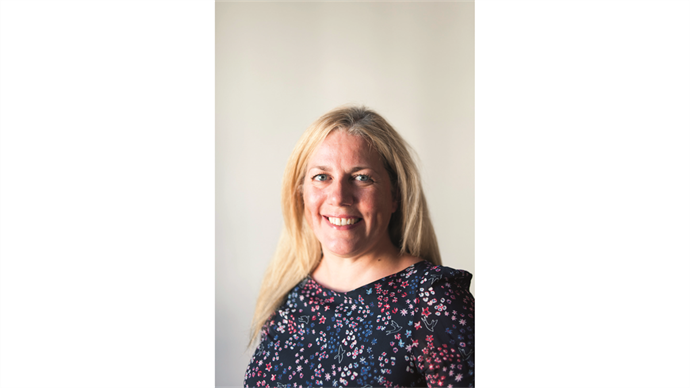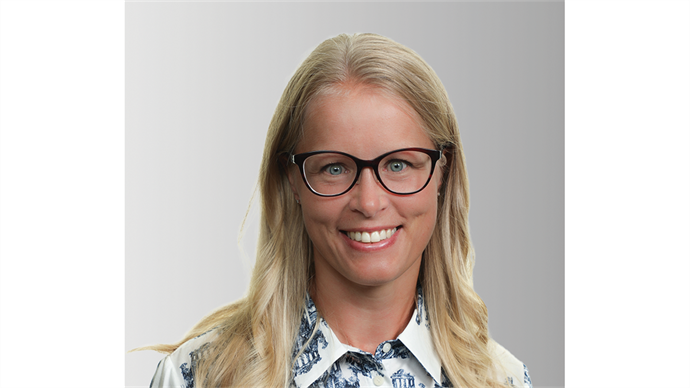Europe lags behind Asia and the US on diversity and inclusion in real estate, but some firms like Cromwell Property Group are taking action.
The global health crisis has been a stark reminder that companies need talented professionals to help them survive and thrive when unforeseen ‘black swan’ events disrupt business.
As the pandemic moves from a crisis phase into a management phase across Europe with the relaxation of restrictions, forward-thinking real estate firms are prioritising diversity and inclusion (D&I) to ‘crisis-proof’ their operations and boost performance.
The thinking – backed up by evidence – is that organisations make more profitable choices by including a diversity of thought in their decision-making process. In the workplace, diversity of thought is achieved by having teams from a variety of backgrounds, experiences and cultures. Inclusion is when team members feel empowered to contribute meaningfully.
But the European commercial property industry isn’t exactly a D&I trend-setter. The sector’s C-suite has long been populated by a particular type of person, usually in a smart suit and tie. Research indicates many European firms aren’t in a position to reap a D&I dividend, which could leave them more vulnerable to future – as yet unknown – system shocks and struggling to attract vital new talent.
Last year, the first-ever D&I survey of the global real estate industry found that Europe badly lags both Asia and the US for the number of women in executive and board-level posts, at a low 14%.
The Global Real Estate DEI Survey – the ‘E’ stands for equity – also reported European real estate is the least balanced in gender terms, with women comprising just over one third of the total workforce (38%). That’s despite other figures showing marginally more females than males join the sector in entry-level positions. The suggestion is many women are on a career ladder which doesn’t go as high for them as it does for men. This all chimes predictably well with the image of commercial real estate’s commanding heights as a rather exclusive ‘old boys club.’
Challenging the status quo
Among the companies taking concrete actions to challenge this stereotype is Cromwell Property Group. The real estate and fund manager with a global investor base has taken up the cause of D&I in eye-catching ways which give confidence it means business and doesn’t see this as window dressing.
For example, the firm will be jointly managing an innovative new fund for wooden buildings – the first of its kind in Europe – with sustainable real asset manager Dasos Capital, an alternative investment fund manager founded in Finland. The fund is being led by a woman, Eeva Saravuo. Meanwhile, the person responsible for the increasingly business-critical matter of environmental, social and governance (ESG) in Europe for Cromwell is also female, Sandrine Fauconnet.
She explains why D&I is urgent for Cromwell. ‘Many companies succeed today because they’re fleet of foot and can thrive during periods of change, like with Covid-19, for example,’ says Fauconnet. ‘If you can’t do that, you get left behind. And there are so many changes coming in real estate, in the shapes of ESG, proptech and others.’
The Australian-owned company has also appointed a heavy hitter to play a key role in its regional diversity and inclusion working group in Europe. Danya Pollard, head of capital solutions, is well acquainted with leadership roles with change-making scope. She’s a member of Cromwell’s Global Management Committee and the firm’s European Management team.
The company is taking a purposeful approach.
There are targets for improving diversity at upper-management level. A regular criticism of quotas is they are exclusionary, but the sector-wide numbers suggest that assertive action may be needed to move the needle on diversity.
‘Targets are important, as a measure of progress,’ says Pollard. ‘We’re moving towards harder targets on a global scale but also regionally, as well. Cromwell currently has an 50/50 split in male to female employee ratio and above average percentage for female executive hires, but gender is only the beginning. What we want to do is reflect the diversity of our thinking because we are a diverse company, expanding globally. We want to welcome all talents.’
A recent internal survey found circa 90% of colleagues have confidence that Cromwell is ‘walking the walk’ in this area. That trust is crucial if D&I policies are to make a real impact.
Pollard presents as the embodiment of the power of diversity for success. She’s held a string of leadership positions across the financial sector and has a truly international background; born in Curacao in the Dutch Caribbean with South American, Indian, Black and Chinese heritage, grew up in Miami and Barbados, and is a long-term resident of London.
Pollard has personal experience of operating in a male-dominated sector, and she’s set to bring all of it to her role on Cromwell’s diversity and inclusion European regional working group, giving it authenticity and substance.
‘My question was, “What are we trying to achieve here, and will it make a real difference?”’ says Pollard of her reaction when presented with the opportunity. ‘The working group exists to continuously move the needle, rather than as a tick-box exercise. It is important to me to make sure that as a company we’re doing the right thing – not just saying the right thing – in this regard.
‘I feel so strongly about D&I as I’ve had over 20 years in financial services, within different specialisms; operations, investment and governance, and I have witnessed the positive change that’s being made across the industry. But we’ve still got so much more to go. We need to speak ‘on purpose’ and ‘with purpose.’
Closing the sector’s yawning diversity gap matters for attracting new generations of talent, the lifeblood of successful enterprises. Young professionals are likely to join the property sector if they can see a pathway to career success. An overwhelming preponderance of white males in high-visibility roles isn’t much of an advert for diversity nor inclusion.
Forging out space in the industry for diverse talent is a mission which Pollard also has personal stakes in, she says.
‘My daughter told me “you know, Mum, it’s really important for girls my age, to see women in leading roles.” She and her friends at secondary school are already thinking about their future vocations, of seeing real diversity in the professional workplace, and not women getting certain stages of their careers and then having to drop out. Whilst we celebrate and recognise the foundation which has been set, and the journey of the past; I strive to leave one of my own.’
This sense of inspiring the community beyond Cromwell’s office walls – which have the company’s values printed on them – is part of the mix.
At a new site in Scotland, Cromwell recently challenged a construction contractor to put inclusion into action, by hiring some apprentices from among local long-term unemployed people.
Fauconnet explains: ‘When selecting a developer we required they consider social impact in their delivery. These initiatives aren’t a financial cost and they definitely have a positive impact on the community. As a large-scale investor I think it’s our responsibility to have a positive social impact. Additionally, today, we have investors who want to make sure that we use contractors with good credentials in these spaces.’
This case shows there are many ways to put D&I into action, with concrete benefits for both business and communities. Mentoring offers another route.
Pollard says she is pushing formal mentoring at Cromwell, but this important activity can also be done informally, too. The key is to pay it forward.
‘Everyone needs support and encouragement, irrespective of seniority or position. To be challenged in a positive way, brings about development, which in turn, is good for the individual and the company. Within Cromwell I think we are very good at listening to the younger cohort and reflecting a new perspective. We learn a lot from them.’
Diversifying the portfolio
With a long history of investing in commercial real estate across Europe, Cromwell has extensive experience in managing a number of investment strategies across the risk return spectrum and across traditional real estate sectors, ranging from light industrial and logistics, office and retail. Now, the company is about to take this to the next level, with a number of new investment initiatives across Europe.
One particular highlight that the Group is in the process of launching a jointly managed wooden building fund with Dasos Capital, with a female fund manager at the helm.
Eeva Saravuo will lead this pan-European open-ended fund, the first of its kind. The fund is targeting an initial close of €100 mln by the end of the second quarter of this year and a long-term target value of circa €1 bn.
The new wooden building fund also has an obvious environmental appeal to institutional investors, who are actively seeking to decarbonise their portfolios to comply with a growing body of regulation and to hit ambitious ‘green goals’ as crystalised in their environmental, social and governance (ESG) agendas.
But it would be missing a point to view this eye-catching blend of a ‘green’ fund and female manager as a nod to trendy ‘stakeholder capitalism,’ where activist stakeholders force change upon stuck-in-the-past businesses in the names of social justice and climate action.
That’s because the Nordics is globally famed for the gender equality of its societies, meaning that offices like Cromwell’s in Finland, may simply be ahead of the curve when it comes to diversity and inclusion in Europe.
‘I’m quite used to having women in senior roles and for me, this has always been my business as usual. I haven’t experienced discrimination because of gender,’ says Saravuo.
‘I would encourage all the young female considering real estate business, to just enter and work your way up. For me, it has been so obvious that I can be who I want to be, and gender doesn’t matter.’
In her position as the manager of the innovative new jointly-managed wooden building fund, could Saravuo be a role model for the next generation of female talent?
‘I truly hope so,’ she says. ‘I think it has set a good example for companies and young people. Cromwell is championing diversity at the same time as it’s promoting ESG, which is a good match. It’s going to be an advantage for the fund.’
‘Diversity and inclusion are very important for various businesses and for investors too, so I personally consider that it’s an advantage of this fund.’
Ambitious diversity policies are fine and RICS reports 70% of property firms have one. However, the evidence is that progress is slow. In this context, an operation like Cromwell’s at the European Union’s northernmost boundary, unavoidably becomes a beacon, showcasing the benefits of diverse, inclusive workplaces and how to turn D&I aspirations into realities.
First timber fund
Demand has so far been brisk for the first-ever pan-European fund for wooden buildings, which shows the appetite is there among institutional investors.
So what’s the thinking behind it?
Saravuo says the market in Europe for wooden building has seen annual growth of 8% since 2015. This rise is in the context of society-wide efforts to cut carbon emissions, often termed ‘net zero.’ In the past year, a string of leading property firms including Cushman and Wakefield and LGIM promised to make their portfolios carbon-free by 2050.
At the same time, ‘green finance’ is emerging which offers cheaper borrowing in return for hitting those ambitious carbon goals. There is also seemingly unstoppable momentum behind regulation that punishes buildings which are bad for the environment because of levels of carbon dioxide embodied within them from construction, or their on-going CO2 emissions.
Saravuo also points to the EU’s Sustainable Finance Disclosure Regulation (SFDR), a directive which challenges owners of assets to demonstrate their green credentials have substance. This new jointly-managed wooden building fund is targeting itself as a SFDR Article 9 fund, which means it will have a primary focus on sustainable investments.
Saravuo explains: ‘If we consider the whole lifecycle from construction through to demolition, then timber is an extremely environmentally-friendly, low-carbon solution.
‘There’s a great sustainability angle with timber, as you can improve the carbon footprint of a building throughout its entire lifecycle.’
The construction costs of timber can be slightly higher than using concrete and steel, but this is balanced by a shorter construction period allowing the asset to begin producing income sooner.
Saravuo shares more detail about wooden buildings as a sub-segment. ‘Returns-wise, I would say they’re pretty much the same [as non-timber assets]. Of course, it depends on the strategy. We are looking to build a core strategy, which means that we are looking for income-producing assets in good locations and the competition over such core assets is very tough.’
What is the market for timber buildings like in Europe during early 2022?
‘Supply is increasing all the time and you can see a lot of variety in the sectors, meaning there are residential buildings, and then there are offices, and even some retail units. It’s quite flexible. You can even build industrial or logistics buildings out of timber.
‘Of course, I would say currently that it’s offices and the residential sector, which are the most common. But in the Nordic countries, there are public buildings like schools, for which timber construction materials are commonly used.’





































